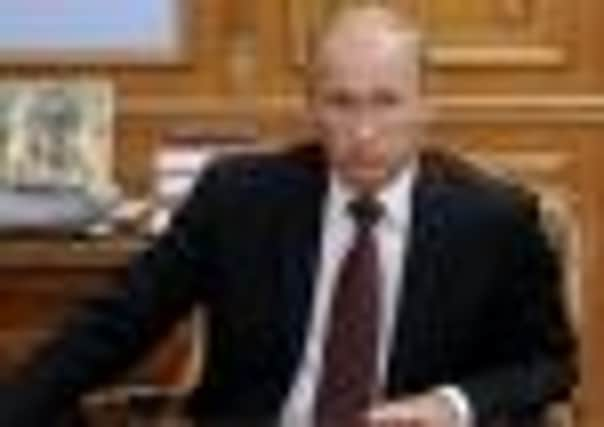Vladimir Putin’s drive for blue-collar votes aided by state TV


The prime minister’s tightly choreographed appearance at the factory in the north-western city of Tikhvin got top billing on all three Kremlin-controlled television networks – and points to his campaign strategy as he tries to recapture the presidency in March.
With the urban middle class turning against him, Mr Putin is focusing increasingly on his traditional blue-collar and rural support base, which tends to get all of its news from state TV. Factory workers, farmers, public servants and the elderly form the backbone of the Russian leader’s political following.
Advertisement
Hide AdAdvertisement
Hide Ad“The higher educated and the well-to-do tend to have a more critical attitude toward the government,” said Alexei Grazhdankin, of the Levada Centre, a leading independent polling agency. “They have more self- esteem, feel more involved in the political process and demand respect from the authorities.”
Mr Putin’s troubles with the urban elites deepened dramatically in December as tens of thousands of Muscovites joined anti-Putin demonstrations to express anger over fraud in a parliamentary election. A third protest rally is set for this weekend.
Mr Putin, who was president for eight years before shifting into the PM’s job four years ago because of term limits, is seeking to win back the presidency – meaning he could extend his hold on power until 2018.
“Never before has Putin taken the desperate step of stirring up confrontation in society under the slogan ‘Russia against Moscow’,” said Liliya Shevtsova, a senior associate with the Carnegie Endowment’s Moscow office. She and other analysts warn that such tactics could split society and raise tensions.
The news broadcasts of the premier directing the Tikhvin plant’s opening are part of a daily pattern. Almost every evening, state TV shows him meeting pre-selected groups of ordinary Russians or giving orders to officials.
“It’s intended to show that he is on top of things, follows all the developments, is always in charge,” said Alexei Makarkin, of the Centre for Political Technologies, an independent think tank.
Mr Putin’s appearances also seem designed to show that all is well in the country. The pristine new plant in Tikhvin, for example, served to project an image of Russia as a future technological powerhouse, even though the economy continues to rely almost exclusively on exports of oil, gas and other raw materials.
While the bulk of blue-collar workers continue to support Mr Putin, a significant share back communist and nationalist candidates, and many are undecided. To win over wavering voters, the PM has countered the communists with promises to impose new taxes on the rich, and appealed to nationalist sentiment with a pledge to toughen migration rules.
Advertisement
Hide AdAdvertisement
Hide AdFour other candidates are running for president, three of whom have run against Mr Putin in the past. The strongest of the bunch is Communist Party leader Gennady Zyuganov, but none of the veterans of past campaigns poses a serious challenge.
Latest opinion polls show Mr Putin’s ratings hovering below the 50 per cent needed for a first-round victory on 4 March.